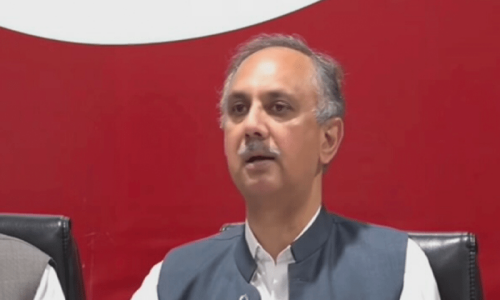LAHORE: After Tarbela Dam, which was filled on Aug 9, Mangla Dam also hit the maximum level of 1,242 feet on Friday.
Given the flow trend, the Indus River System Authority had planned filling of both dams between Aug 10 and 15, but later delayed Mangla Dam filling in order to accommodate unexpected inflows because of highly wet cycle in the country and persistent downpour in catchment areas.
Also read: Irsa wants Wapda to fill Mangla to the maximum
With both dams filled, the country now holds over 14 million acre feet of water, with Tarbela lake storing 6.45maf, a raised Mangla Dam 7.4maf and Chashma lake 0.24maf.
With Mangla raised by 30 feet in 2009, the storage level of the reservoir went up to 1,242 feet above mean sea level, increasing its storage capacity from 4.6maf to 7.4maf and turning it into the country’s largest lake. The raising added 2.88maf of water, enough to generate 644 million units of cheap electricity.
“Things went according to planning this year with healthy inflows of water,” says an official of the Punjab Irrigation Department.
With the country now hopefully out of wet cycle, Irsa decided to fill the dams, he said.
“In fact, it was double advantage this year,” says another official. Continual rains in catchment areas generated additional water and downpour in the plains reduced demand for water.
In addition to storing water, a healthy amount of water was sent downstream Kotri barrage to check sea intrusion. Even on Friday, more than 550,000 cusecs of water was released downstream Kotri barrage.
Had the country another dam like Tarbela, it could have also been easily filled this year. From today onwards, the entire river flows would go waste to the sea. On Friday, Indus was flowing at 202,500 cusecs, River Kabul at 40,500 cusecs, River Jhelum at 29,400 cusecs and River Chenab at 75,000 cusecs. It was in addition of over 60,000 cusecs flowing into Pakistan from Sutlej, which has also been breaking its banks at certain points.
The official said it was time to have a long-term water storage policy to capitalise on situations like this one, and transfer water from wet to dry cycles and seasons.
Published in Dawn, August 22nd, 2015
On a mobile phone? Get the Dawn Mobile App: Apple Store | Google Play














































